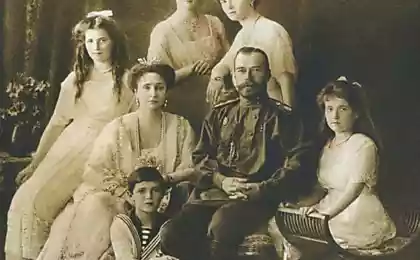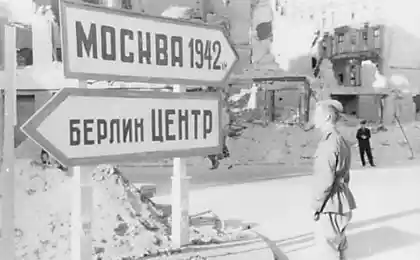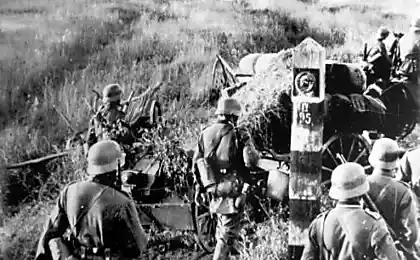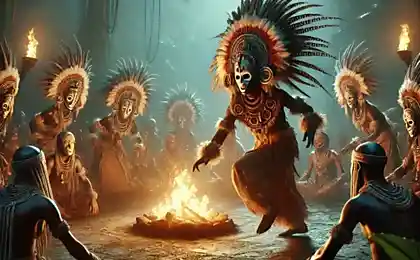182
Strange Soviet traditions that used to be the norm but now seem a bit wild
Each generation has its own traditions and customs. They seem completely normal in their time. But it changes. life They also undergo transformation. Today's edition. "Site" It will tell you what customs were fashionable in the Soviet Union. And now they seem strange and completely inappropriate.

One of the strange traditions of a bygone era is photographing the deceased in a coffin. This custom is not entirely new to the USSR, but rather borrowed from 19th-century Europe. Then photographs of the deceased were made as with living people. Now, looking at these pictures, it is difficult to understand whether this person is alive or not. Often the photos were taken by family and it becomes even more creepy. In the USSR, they were limited only to photographs from the procession of burial. We took a couple of pictures of the man in the coffin, and there were relatives around him. In the home archives you can often find such eerie pictures that remain in memory of grandparents. Fortunately, this tradition is not maintained today.

Another unusual funeral tradition was the orchestra. It was customary to accompany each relative on the last journey to the loud chords of the orchestra. Ahead marched people with trumpets, drums and violins, followed by a long procession of relatives and friends. At first, only politicians or generals were buried so pompously. A little later, each considered it his duty to bury his relative as a great man. And when mourning music began to play in the yard, the neighbors tried to close the windows more tightly, so as not to scare the children. Many superstitious customs appeared at that time, which are no longer relevant today.

But it wasn't just the funerals that had strange customs. They were also present at the wedding. In addition to the fact that each region of a large country had its own traditions were also Soviet. For example, laying flowers at monuments. This tradition appeared after the Second World War. Back then, people who went through the horrors of war came to the monuments to honor the memory of their comrades. Later, this tradition firmly settled in the minds of the newlyweds. And every time, after the procedure of marriage in the registry office, young long motorcade of cars toured the monuments in the city and laid flowers that they were given. But not all small towns and villages had enough monuments, so often flowers appeared at the main attraction of each settlement - near the monument to Lenin.

Every resident of the Soviet Union was the builder of the ideal state. And everyone was convinced that their voice or opinion was crucial. Anything that was considered wrong, immoral or unacceptable was condemned and punished. And the culprit had to be brought to a friendly court. In such courts, a person who committed a wrong act was publicly censured. After all, a real communist could not be an alcoholic, a parasite or have an affair on the side. In the USSR, everything was put on public display and everyone expressed his point of view. How the person who stood before the friendly court felt, it is not difficult to guess. After that, the person returned to the same team and continued to work.

Every person needs happiness, so the Soviet citizen sought it in all available places. So there was the custom of hunting for lucky tickets. To travel by public transport, everyone had to purchase a ticket from the conductor. Tickets were numbered and had a six-digit number. Someone came up with the idea that if two pairs of three-digit numbers on a ticket give the same number, then the ticket is lucky. For happiness to come, you had to eat this ticket. Not everyone was ready to eat a piece of paper, so they limited themselves to collecting lucky tickets in their wallet or at home in an album.

Perhaps the future generation will also be surprised to study the lives and customs of their parents. But while we live in the present moment, many traditions and customs are absolutely normal for us. What unusual customs do you know? Write your stories in the comments.

One of the strange traditions of a bygone era is photographing the deceased in a coffin. This custom is not entirely new to the USSR, but rather borrowed from 19th-century Europe. Then photographs of the deceased were made as with living people. Now, looking at these pictures, it is difficult to understand whether this person is alive or not. Often the photos were taken by family and it becomes even more creepy. In the USSR, they were limited only to photographs from the procession of burial. We took a couple of pictures of the man in the coffin, and there were relatives around him. In the home archives you can often find such eerie pictures that remain in memory of grandparents. Fortunately, this tradition is not maintained today.

Another unusual funeral tradition was the orchestra. It was customary to accompany each relative on the last journey to the loud chords of the orchestra. Ahead marched people with trumpets, drums and violins, followed by a long procession of relatives and friends. At first, only politicians or generals were buried so pompously. A little later, each considered it his duty to bury his relative as a great man. And when mourning music began to play in the yard, the neighbors tried to close the windows more tightly, so as not to scare the children. Many superstitious customs appeared at that time, which are no longer relevant today.

But it wasn't just the funerals that had strange customs. They were also present at the wedding. In addition to the fact that each region of a large country had its own traditions were also Soviet. For example, laying flowers at monuments. This tradition appeared after the Second World War. Back then, people who went through the horrors of war came to the monuments to honor the memory of their comrades. Later, this tradition firmly settled in the minds of the newlyweds. And every time, after the procedure of marriage in the registry office, young long motorcade of cars toured the monuments in the city and laid flowers that they were given. But not all small towns and villages had enough monuments, so often flowers appeared at the main attraction of each settlement - near the monument to Lenin.

Every resident of the Soviet Union was the builder of the ideal state. And everyone was convinced that their voice or opinion was crucial. Anything that was considered wrong, immoral or unacceptable was condemned and punished. And the culprit had to be brought to a friendly court. In such courts, a person who committed a wrong act was publicly censured. After all, a real communist could not be an alcoholic, a parasite or have an affair on the side. In the USSR, everything was put on public display and everyone expressed his point of view. How the person who stood before the friendly court felt, it is not difficult to guess. After that, the person returned to the same team and continued to work.

Every person needs happiness, so the Soviet citizen sought it in all available places. So there was the custom of hunting for lucky tickets. To travel by public transport, everyone had to purchase a ticket from the conductor. Tickets were numbered and had a six-digit number. Someone came up with the idea that if two pairs of three-digit numbers on a ticket give the same number, then the ticket is lucky. For happiness to come, you had to eat this ticket. Not everyone was ready to eat a piece of paper, so they limited themselves to collecting lucky tickets in their wallet or at home in an album.

Perhaps the future generation will also be surprised to study the lives and customs of their parents. But while we live in the present moment, many traditions and customs are absolutely normal for us. What unusual customs do you know? Write your stories in the comments.
Think about where we would go if we could use a time machine.
We observe the fast, but we can not do without cookies, here comes to the rescue your favorite recipe.























